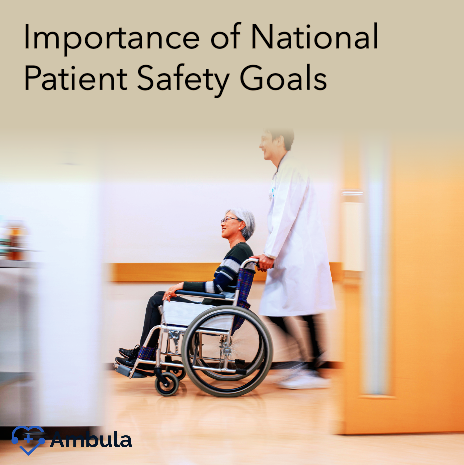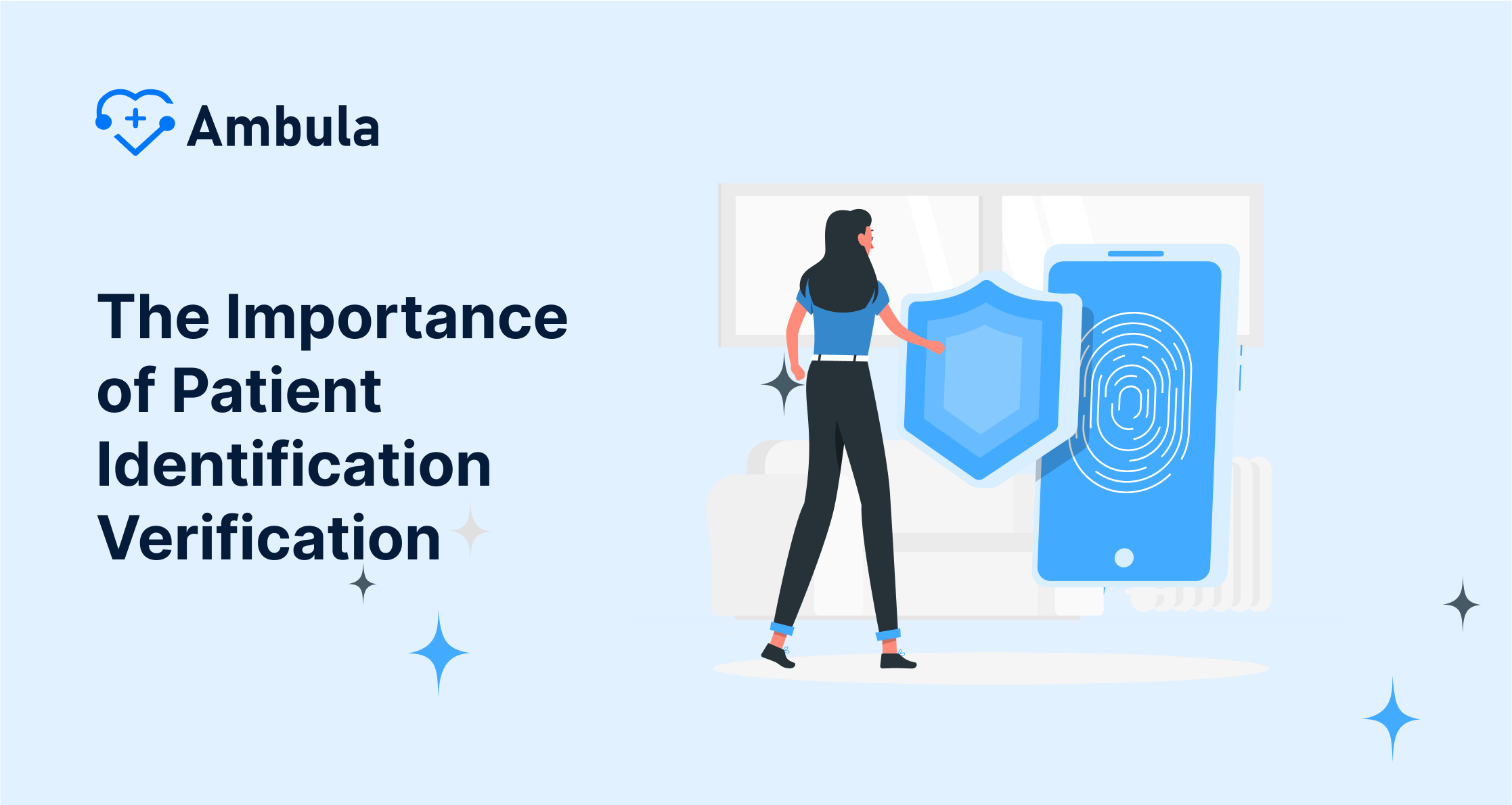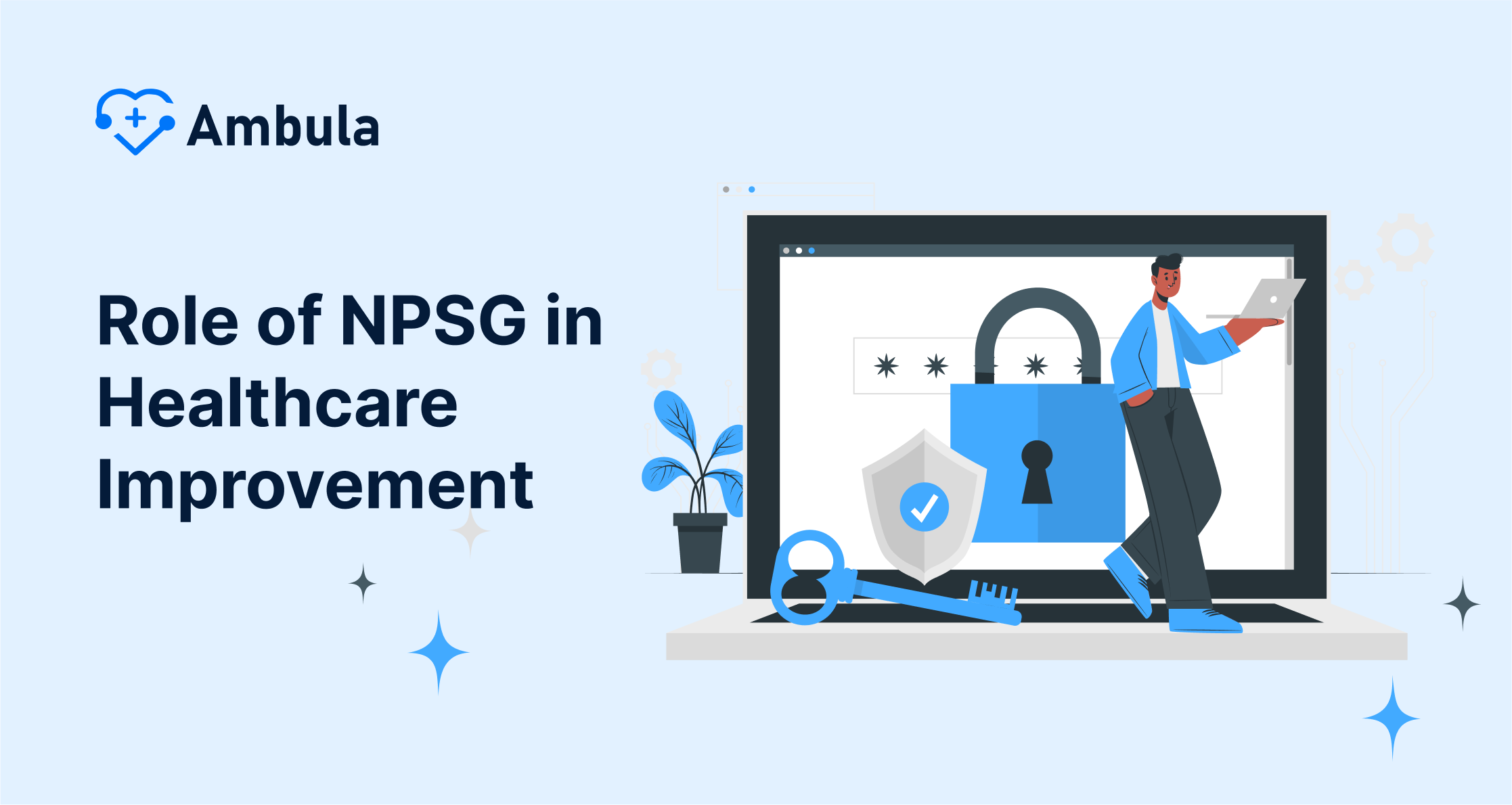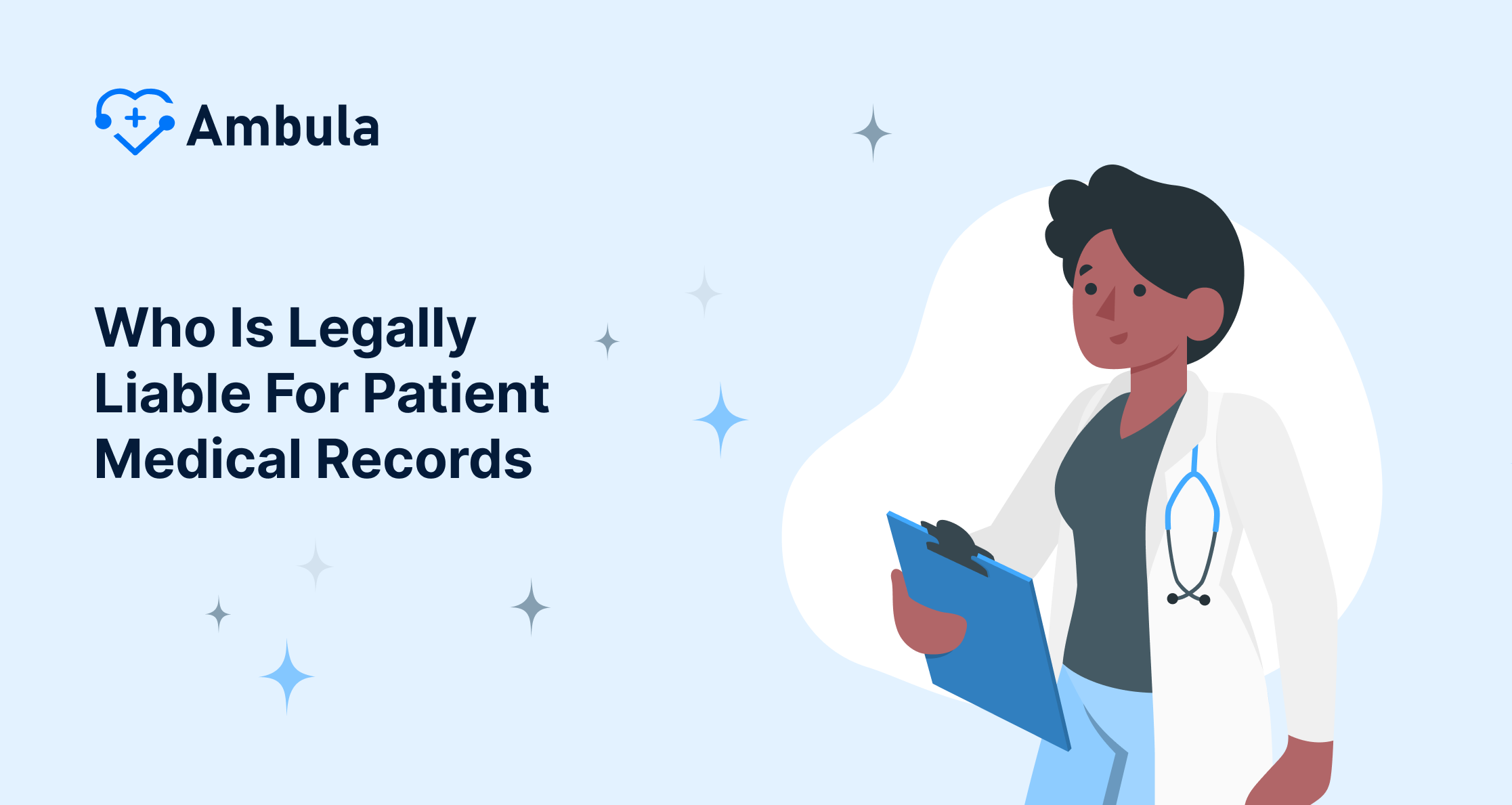
Patient safety goals are at the top of healthcare priorities influencing the quality and effectiveness of medical care around the world. These goals guide healthcare providers helping them to ensure patients stay safe and protected during their medical journey. As we get closer to 2024, sticking to these goals has become more important than ever, with new challenges and best practices popping up in the healthcare scene.
In this article, we’ll take a look at the top national patient safety goals for 2024. We’ll dig deep into important areas like making sure patients are correctly identified improving how healthcare workers talk to each other, keeping medication use safe, and stopping infections from spreading. When healthcare pros understand and put these goals into action, they can cut down on mistakes, help patients get better results, and create a safer environment in their workplaces.
Patient safety goals are at the top of healthcare priorities, and they shape how good and effective medical care is around the world. These goals act as a guide for healthcare providers showing them how to make sure patients are safe and well during their medical journey. As we get closer to 2024, sticking to these goals has become more important than ever, with new challenges and better ways of doing things in the healthcare scene.
In this article, we’ll explore the top national patient safety goals to follow in 2024. We’ll delve into key areas such as correct patient identification, effective communication in healthcare settings, medication safety protocols, and infection prevention and control measures. By understanding and implementing these goals, healthcare professionals can significantly reduce the risk of errors, enhance patient outcomes, and foster a culture of safety within their organizations.
Correct Patient Identification
Importance of accurate identification
Accurate patient identification forms the foundation of quality healthcare delivery. It has a vital impact on patient safety and helps prevent medical errors that can result in serious consequences, including wrong diagnoses, incorrect treatment, and potential harm to patients. Proper identification allows healthcare providers to access the right patient history, leading them to create more informed and effective treatment plans.
Correct patient identification has an influence on more than just individual patient care. It contributes to the reliability of electronic health records (EHRs), which is crucial to providing ongoing care, conducting research, analyzing data, and processing reimbursements. What’s more, accurate identification helps hospitals meet healthcare regulations and standards, which often require strict patient identification protocols.
From a financial standpoint, getting patient IDs right can save hospitals a lot of cash by reducing mistakes and repeat procedures. It also helps stop healthcare scams, like stealing identities or misusing services, which can lead to legal and financial troubles.
Two-identifier system
To boost patient safety and cut down on ID mix-ups, hospitals use a system with two identifiers. This setup involves wristbands and barcode stickers to identify patients. The Joint Commission says two identifiers, like a patient’s full name, birthday, and/or medical ID number, must be used every time a patient is seen.
The process starts when a patient checks in, and staff creates or updates a record in the hospital’s EHR system. Staff then print a wristband using a laser or thermal printer with materials made for each device. The band shows key info like the patient’s name, birth date, and a unique ID number or barcode.
When doctors order treatments, scanning the barcode lets providers pull up the patient’s record and check that the right patient gets the correct procedure or medicine. This two-identifier approach helps to prevent medical mistakes such as giving wrong meds or treatments, which keeps patients safe.
Technology-aided identification
Advancements in technology have introduced more sophisticated methods of patient identification. Biometric healthcare solutions, such as touchless biometric systems using facial recognition or iris scans, offer a secure and efficient way to identify patients. These systems use unique biometric characteristics to accurately identify individuals, helping to prevent data corruption and unauthorized access, as well as avoid the creation of duplicate records [7].
The implementation of Computerized Provider Order Entry (CPOE) and Clinical Decision Support (CDS) systems has the potential to reduce errors and increase the efficiency of clinical workflows [15]. However, it’s crucial that these systems are well-designed and fit into existing workflows to avoid frustrating users and increasing the potential for errors [15].
Artificial Intelligence (AI) and machine learning are also being explored for patient identification. These technologies use algorithms to absorb large amounts of historical and real-time data and then predict outcomes and recommend treatment options as new data are entered by clinicians [15]. However, challenges remain, including variable quality of systems, algorithm drift over time, and potential racial and ethnic biases in healthcare algorithms [15].
As healthcare continues to evolve, accurate patient identification remains paramount. By leveraging a combination of traditional methods and emerging technologies, healthcare providers can enhance patient safety, improve care coordination, and foster trust in the healthcare system.
Effective Communication in Healthcare
Clear communication in healthcare plays a key role to keep patients safe boost outcomes, and build trust between healthcare workers and patients. Good communication among healthcare team members is vital to protect patients [22]. Poor communication can happen at many points when providing care, including talks between healthcare workers, patients, and caregivers [22].
Standardized Communication Approaches
To tackle communication issues, healthcare groups have put into action standard ways to improve how information is shared. One such method involves using structured and coded communication practices, which help ensure that providers communicate the same way and lower the chance of bad events.
Bringing clinicians together at the patient’s bedside is one way to share info and work on care plans. This practice has an influence on outcomes, including fewer hospital readmissions.
Team huddles are another good idea. These quick meetings let providers talk during decision-making, share info, and solve problems at all levels. Huddles at the start of shifts help nurses talk about expected patient moves and events for the day. This makes them aware of the sickest patients and possible emergencies.
Critical Information Exchange
Sharing key medical details is essential to keep patient care going smoothly and avoid medical mistakes. Health Information Exchange (HIE) has a big impact on this process. HIE means sending health data between two medical organizations. This can be as simple as emailing secure PDF files or as complex as transferring standardized structured data that computers can read. In the latter case, the information goes straight into the receiving organization’s Electronic Health Record (EHR) system without anyone needing to input it by hand.
Admission, discharge, or transfer (ADT) messages play a crucial role in sharing updates about changes in a patient’s care. These messages contain each patient’s personal or demographic details and signal when an ADT status has changed. ADT alerts function by setting off a message in the hospital information system. This message then undergoes processing and transformation into an alert sent to the primary care practice or community-based care manager.
Cutting Down on Miscommunication Risks
To cut down on risks linked to miscommunication, healthcare organizations have put into action various approaches:
- Closed-loop communication: New employee orientation teaches closed-loop communication. This helps build a workplace that encourages questions, clarity, and thoughtful analysis.
- Bedside shift handoff: Many hospitals use bedside shift handoff between nurses to avoid mix-ups. Research shows that starting bedside reports led to a 24% drop inpatient falls.
- Standardized report sheets: Tools like SBAR (situation, background, assessment, recommendations) help nurses share patient info more during shift changes. These sheets streamline the handover process.
- Training programs: I-PASS, TeamSTEPPS, and simulation-based closed-loop communication give trainees different ways to add structured and purposeful communication in institutions.
- Health Information Technology (HIT): HIT can be a strong tool to back structured communication processes among providers. However, keep in mind that too much reliance on electronic asynchronous communication can cause care delays. These delays happen because of managing electronic health record inbox alerts, the load of collecting key diagnostic info, and tech issues.
By putting these standard approaches into action, zeroing in on key info sharing, and working hard to cut down on mix-ups, hospitals and clinics can boost patient safety and results. Good communication needs everyone to pitch in and put in the work, but the payoff in better patient care and fewer medical mistakes makes it a must-do in today’s healthcare world.
Medication Safety Protocols
High-alert medication management
High-alert medications are key to drug therapy but can cause severe problems if mistakes happen. While errors with these drugs may not occur more often, they lead to major harm and can even kill patients. To tackle this issue, healthcare organizations should put safeguards in place. These include restricting access to high-alert medications using clinical decision support systems, and creating standard procedures for ordering, storing, preparing, and giving these products.
A good approach is to use automated dispensing cabinets (ADCs) with correct storage methods. For example, a hospital almost made a mistake when staff found potassium chloride for injection concentrate in the heparin injection bin of an ADC. To avoid these problems, hospitals can put extra safety steps in place. They can add pharmacy-made barcodes to medication overwrap bags and keep high-risk medications like potassium in special storage vaults for controlled substances.
Medication error prevention strategies
Stopping medication mistakes needs a multi-pronged strategy. The best way to do this is to use Computerized Physician Order Entry (CPOE) systems. A new Cochrane review says CPOE systems work better than anything else to cut down on medication errors in hospitals. These systems take the place of paper orders letting doctors keep an online record of medications. This record shows changes made by other healthcare workers in real time.
Other tech solutions that help reduce medication errors include:
- Clinical Decision Support Systems (CDSS)
- Barcode tags for patients and their medicines
- Electronic systems for giving out medications
These tools spot wrong medications and orders that someone has canceled or changed.
Medication reconciliation plays a key role in error prevention. This approach involves creating a complete list of drugs prescribed to the patient and those they use, including over-the-counter supplements. By keeping an accurate and current medication list, healthcare providers can cut down on common drug mistakes when patients enter hospitals or move between care settings.
Staff education and training
Ongoing education and training have an influence on reducing medication errors among healthcare professionals. Educational interventions led by pharmacists have proven effective to lower medication error rates for healthcare providers. A systematic review and meta-analysis discovered that pharmacist-led educational programs had a significant impact on reducing overall medication error rates (OR 0.38; 95% CI 0.22 to 0.65).
These educational programs involve various approaches, including:
- Lectures
- Posters
- Practical teaching sessions
- Audit and feedback methods
- Flash cards of high-risk abbreviations
Nurses and resident physicians are the main recipients of these educational interventions.
To boost staff education results, organizations should think about putting into action standard processes from the Institute for Safe Medication Practices (ISMP). These processes include cutting down on clutter and distractions, scanning bar codes, checking drug use for each prescription, verifying in two steps, auditing prescriptions after filling, and using built-in tech that warns when medication might be wrong.
When healthcare organizations mix tech solutions standard protocols, and ongoing staff education, they can lower the chance of medication mistakes and make patients safer. Keep in mind that while these strategies look good, we need more research to figure out how often and what to teach in educational sessions to get the best results in cutting down medication errors.
Infection Prevention and Control
Hand Hygiene Guidelines
Hand hygiene plays a key role to prevent and control infections in healthcare. Scientists have known its value for 160 years, since Ignaz Semmelweis did his work. Yet, people still struggle to wash their hands worldwide. On average, healthcare workers follow hand hygiene rules 40% of the time ranging from 5% to 80%.
The Centers for Disease Control and Prevention (CDC) suggests using alcohol-based hand sanitizers (ABHS) in most clinical cases. These sanitizers kill germs better and are easier to use than soap and water [36]. ABHS is the top choice unless hands look dirty, before eating, af
After using the bathroom, or when taking care of patients who might have or do have Clostridioides difficile infection during outbreaks, soap and water should be used [36].
To make sure hands are cleaned , healthcare workers should:
- Use the right amount of ABHS taking about 20 seconds to put it on.
- Focus on areas often missed like thumbs, fingertips, and spaces between fingers.
- Clean hands before and after touching patients, after touching dirty surfaces, and when moving from dirty to clean tasks [36].
Lowering Healthcare-Associated Infections
Healthcare-associated infections (HAIs) put patients at risk when they receive treatment for other conditions [34]. To cut down on HAIs, hospitals and clinics should put proven methods into practice and get leaders at every level involved.
Key ways to lower HAIs include:
- Getting top bosses and board members to show they care about quality, safety, and stopping HAIs.
- Using tools like TeamSTEPPS to help teams talk better.
- Spotting bad things that keep happening and using tools to make them less likely.
- Getting patients and their families to help stop HAIs.
Hospitals and clinics should also focus on basic ways to prevent infections such as:
- Wash hands
- Use personal protective equipment (PPE)
- Train based on skills, check work, and give feedback
- Clean surroundings well
Proven Ways to Control Infections
To set up a good program to prevent and control infections, a facility needs to put policies and steps in place that are backed by evidence. These should include:
- Use standard safety measures, like washing hands and using alcohol-based hand cleaners
- Follow rules to clean and disinfect the environment
- disinfect equipment and supplies used more than once
To make sure these practices work well, healthcare places should set up a complete system to watch for infections that includes:
- Standard definitions and symptom lists for infections
- Surveillance tools like infection surveys and data collection forms
- Spotting high-risk groups
- Sharing and breaking down surveillance results with facility workers
To cut down infection rates, it’s crucial to keep educating and training healthcare workers. Training should cover:
- What HAIs are how they affect patients, and their toll, including tough-to-treat bugs
- How infections spread and ways they pass from person to person
- Basic, targeted, and beefed-up safety measures
- The right way to use protective gear, including putting it on and taking it off
- Proper hand cleaning such as the correct use of alcohol-based hand sanitizers
By putting these proven methods into action and always trying to get better, hospitals can cut down on the chances of HAIs and make things safer for patients.
Conclusion
Looking at the top national patient safety goals for 2024 shows how much people in healthcare want to make things better and keep patients healthy. From making sure they’ve got the right patient to talking using meds , and stopping infections, these goals have a big effect on making healthcare safer. When doctors and nurses focus on these key things, they can lower risks, help patients get better results, and make patients trust them more.
To move ahead putting these safety goals into action needs teamwork from everyone in healthcare. Ongoing training, using new tech, and sticking to proven methods are essential to reach these aims. As healthcare changes, staying alert and flexible will matter to keep patient safety and care quality high.
FAQs
What is the focus of Patient Safety Awareness Week in 2024?
Patient Safety Awareness Week in 2024 set for March 10-16, has the theme “Safer Together.” This theme shows how important it is for care providers, support staff, patients, and their families to work as a team to stay safe.
What are the six International Patient Safety Goals?
The six International Patient Safety Goals include:
- Identifying patients .
- Improving communication effectiveness.
- Making high-alert medications safer.
- Ensuring safe surgical practices.
What is the seventh goal of the National Patient Safety Goals?
The seventh goal of the National Patient Safety Goals aims to lower the chance of infections related to healthcare.
What do the current National Patient Safety Goals for hospitals include?
The current National Patient Safety Goals for hospitals target several key areas: boosting surgical safety, reaching health equity, and stopping problems like infections caught in hospitals, mistakes with medicines suicide in patients, falls, and bed sores.
References
[1] – https://www.unitedadlabel.com/blog/post/ensuring-accurate-patient-identification-in-healthcare/[2] – https://www.utmb.edu/health-resource-center/two-forms-of-identification[3] – https://www.identificationsystemsgroup.com/the-importance-of-accurate-patient-identification/[4] – https://psnet.ahrq.gov/perspective/technology-tool-improving-patient-safety[5] – https://www.intelycare.com/facilities/resources/miscommunication-in-healthcare-why-it-happens-and-how-to-stop-it/







